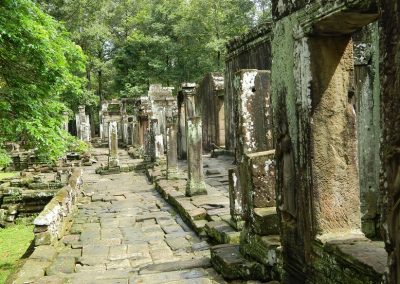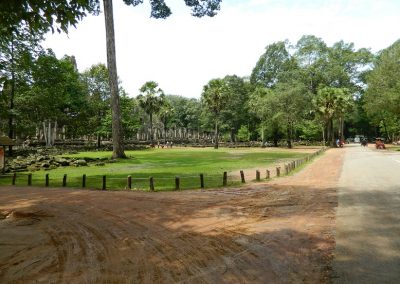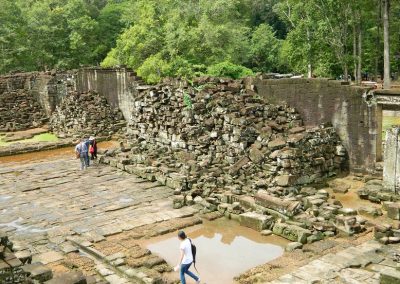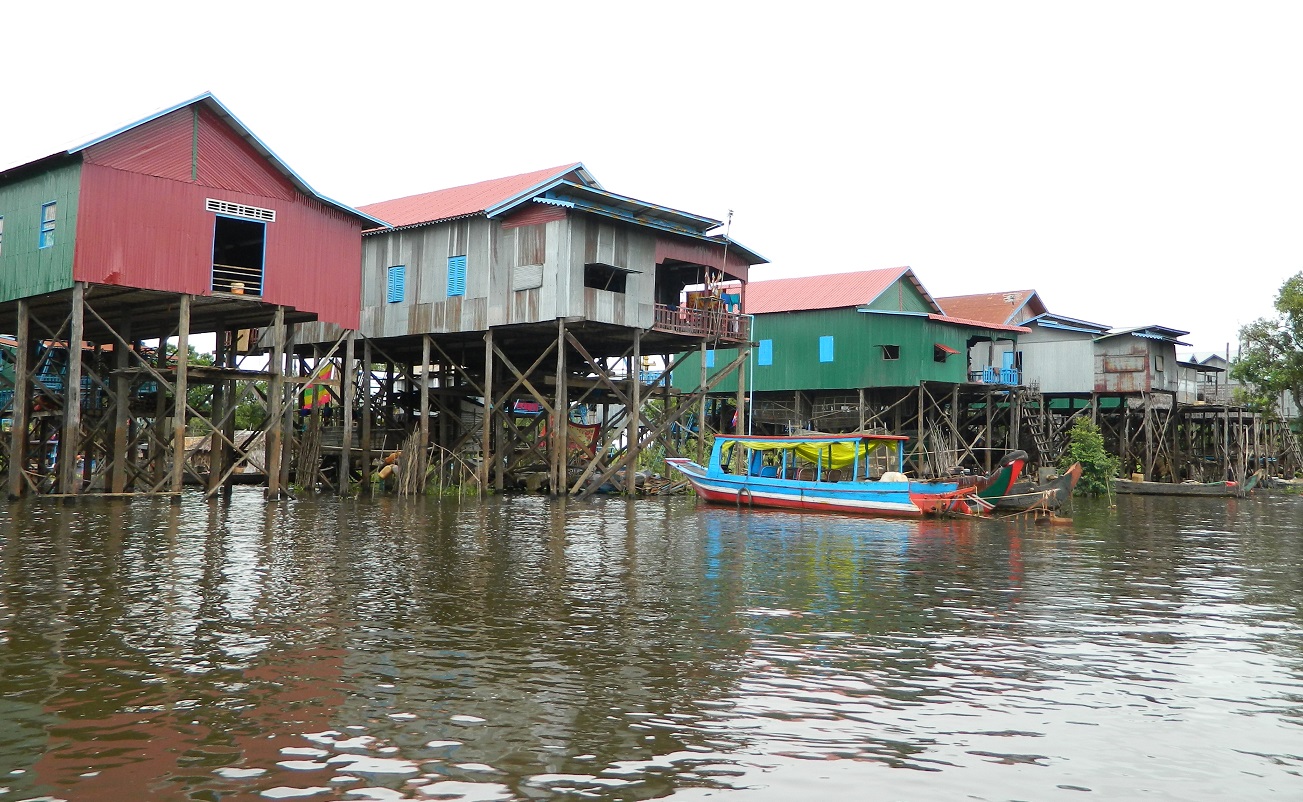Angkor, Tonle SAP and Mekong River
- Angkor – world’s largest single religious monument, easily surpassing the nearest claim by the Mayan city of Tikal. At its peak, the city occupied an area greater than modern Paris, and its buildings use far more stone than all of the Egyptian structures combined.
- Angkor is considered to be a “hydraulic city” because it had a complicated water management network, which was used for systematically stabilizing, storing, and dispersing water throughout the area.
- This network is believed to have been used for irrigation in order to offset the unpredictable monsoon season and to also support the increasing population, estimated to be up to one million people.
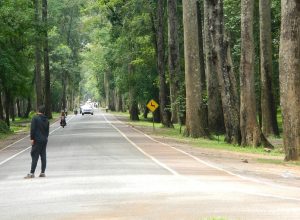
Angkor
- Tonle SAP is a natural flood water reservoir for the Mekong system as a whole by regulating the floods downstream from Phnom Penh during the wet season (Jun – Nov) and makes an important supplement to the dry season (Dec ~ May) flow to the Mekong Delta.Cambodia produces about 400,000 tonnes of freshwater fish per year, the majority of which comes from Tonle sap.
- These fisheries account for 16 percent of national GDP, making the fish industry not only essential to the diet of local populations but to the Cambodian economy as a whole.
- Siem Reap International Airport is the nearest air gateway to Angkor Complex and Tonle SAP.
- Mekong River continues its main stream through Phnom Penh, intersected with Tonle Sap River at Phnom Penh.

Tonle SAP
Phnom Penh Autonomous Port – PPAP
Phnom Penh Autonomous Port is situated at Tonle Sap river, 2 km northwest of the intersection with Mekong River main stream. PPAP is an important international port, is the backbone of Cambodia’s Import / export logistic and trade hub.
PPAP is also an important trans-shipment port serving the inland river ports along Mekong River, including
- Phsar Krom terminals in Kampong Chhnang province,
- Chong Kneas terminals in Siem Reap province
- Tonle Bet terminals in Thbong Khmoum province
- Steung Treng Terminals in Steung Treng province
- Kratie terminals in Kratie province
Funan Techo Canal – Opening Cambodia Up To The World
The Funan Techo Canal project will establish a direct link between the capital of Phnom Penh and the coastal provinces and create an alternative route set to unlock untapped supplementary logistics opportunities for Cambodia.
The man-made canal will be 180 kilometres long and will connect Prek Takeo to Prek Ta Ek and Prek Ta Hing of the Bassac River System and onto Kep province. Once completed, the canal will pass through Kandal, Takeo, and Kampot and see the installation of three watergates or locks (on the current plans these will be added outside of Phnom Penh, in Takeo, and at Kep), as well as 11 bridges and the addition of 208 kilometres of roads on either side of the waterway. Read more…
New Phnom Penh Airport
The new Phnom Penh Airport is called Techo Takhmao International Airport, scheduled to open in year 2025, is built in Kandal Province, about 40 km south of the capital.
With the ability to handle the largest aircraft such as the Airbus A380 and Boeing 747-8. Initial capacity planned will have 22 aircraft gates with 13 million passengers per year, and substantial room for expansion, Techo Takhmao is classified as a 4F class airport.
Once operational, Techo Takhmao will take over international flights for the existing Phnom Penh Airport. Phnom Penh Airport will then be delegated to domestics, private jets, military and government aircrafts. Read more…
Cambodian Railway Line
There is two railway lines in Cambodia, one is from the Thai border town Poipet to Phnom Penh and another from Phnom Penh to Sihanoukville, where the only deep-water port in Cambodia located.
The lines were first built during French Indochina era, but all services had been suspended in 2009 as it was damaged to ruin state due to disrepair during civil war in the second half of the 20th century. In June 2009, Australian company was awarded the contract to reconstruct Cambodia’s railway lines. But The project was suspended in March 2012 due to multiple undissolved difficulties. Within the same year, Cambodia acquired China’s participation in the railway lines rehabilitation.
Phnom Penh to Sihanoukville line was opened for operation in April-2016. Then, the line between Phnom Penh and Poipet line was resumed operations in May 2021
Japanese Train Expected to Boost National Rail System
Cambodia is slated to receive an 11-carriage train from Japan that can reach up to 110 km/h, expected to vastly improve the Kingdom’s rail system.
The Royal Railway of Cambodia has acquired a KiHa 183 series train with 11 carriages, which is expected to arrive at Sihanoukville Autonomous Port on April 27, with an expert predicting investment in train transportation will help to reduce poverty. Read more…

